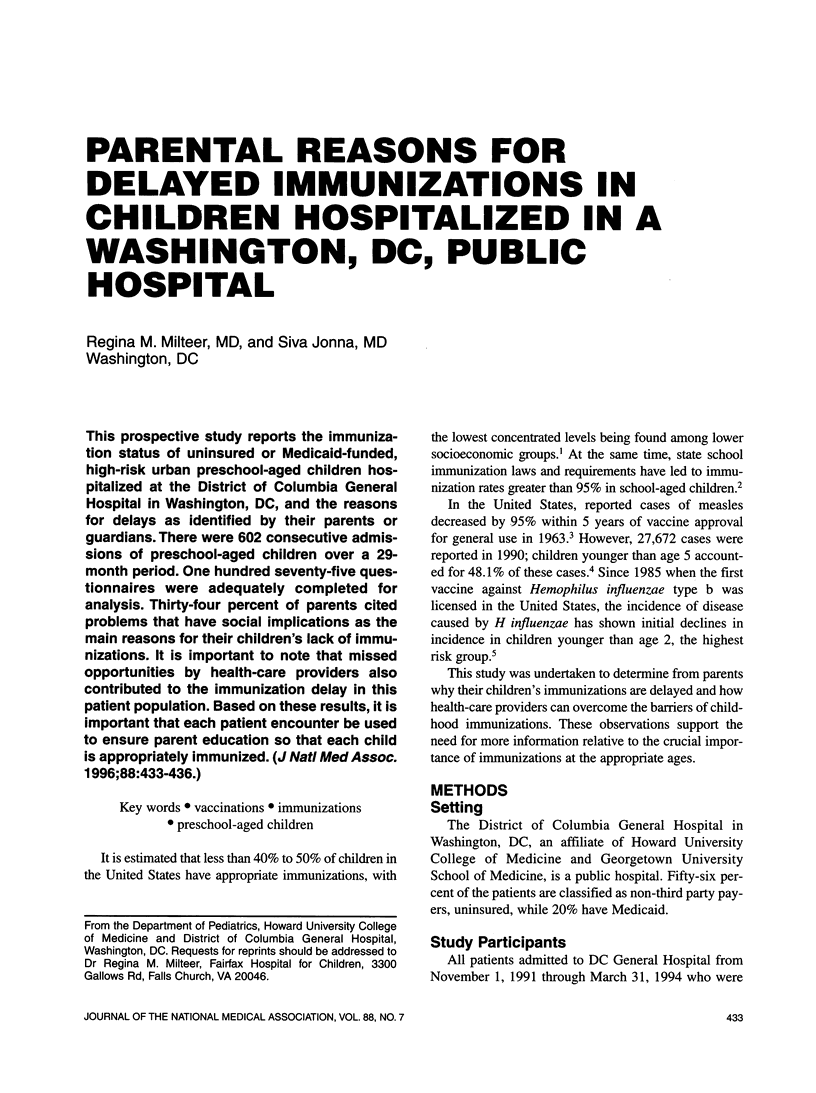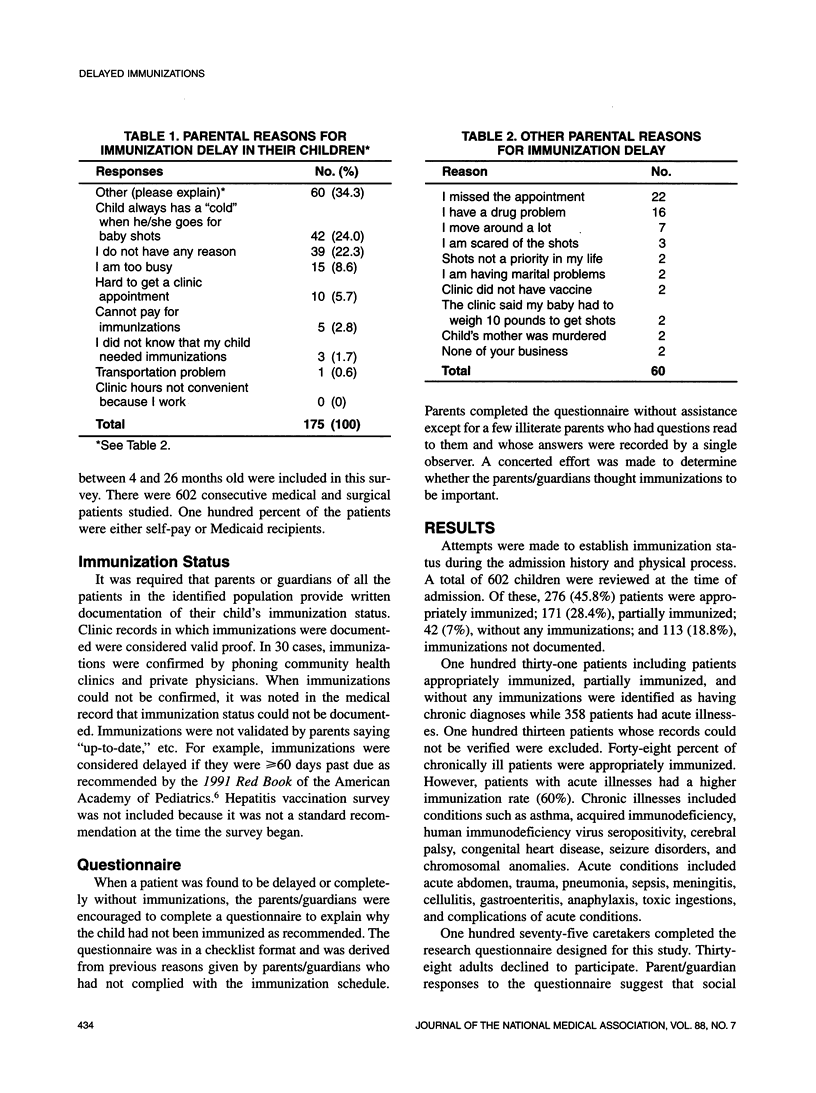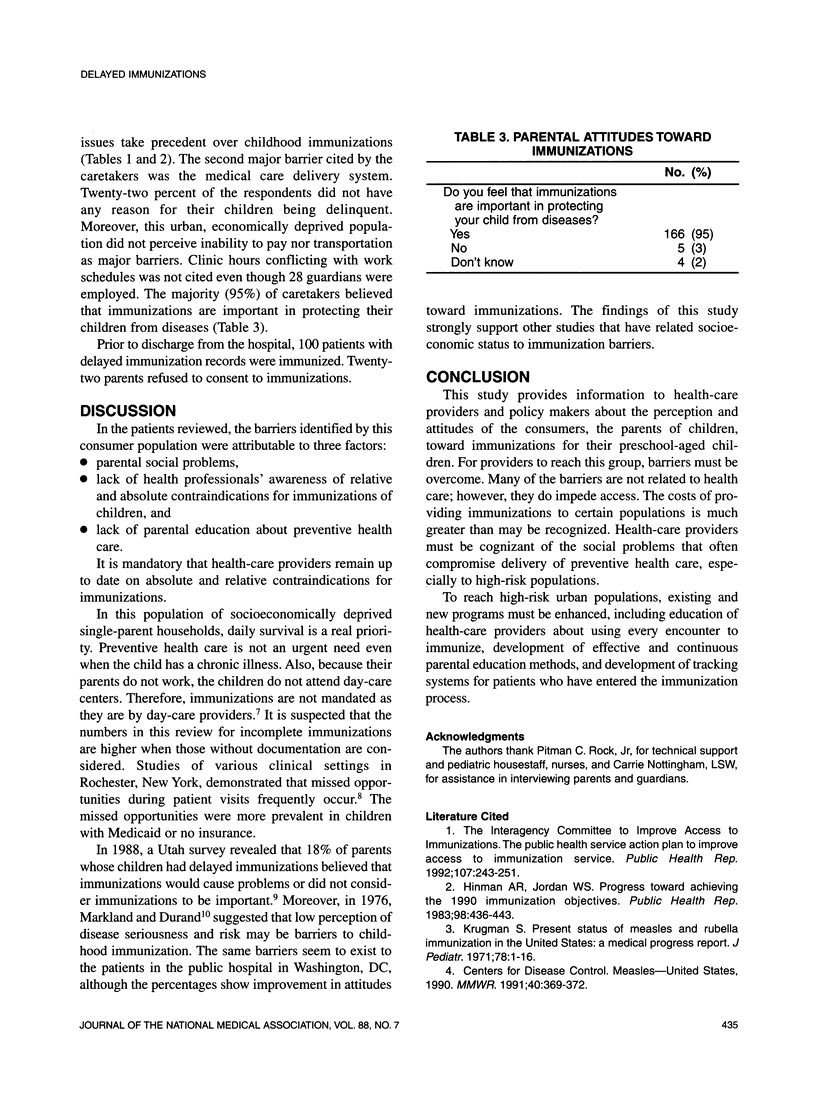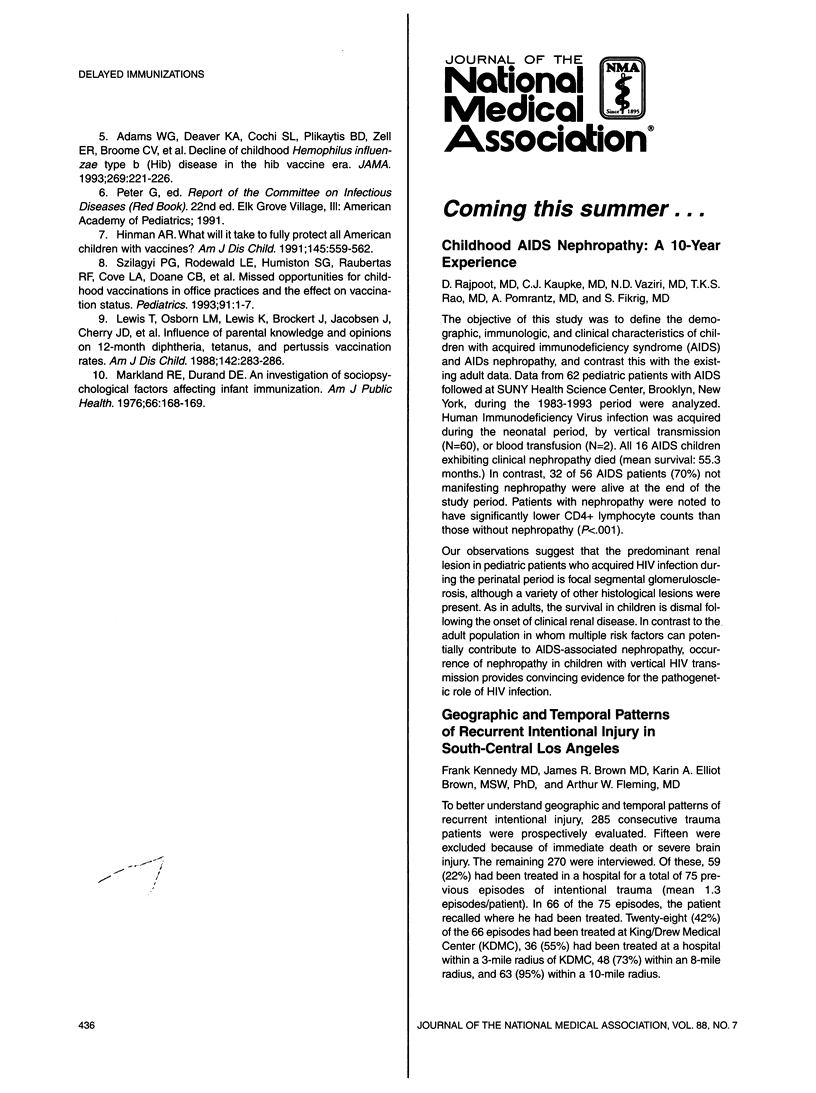Abstract
This prospective study reports the immunization status of uninsured or Medicaid-funded, high-risk urban preschool-aged children hospitalized at the District of Columbia General Hospital in Washington, DC, and the reasons for delays as identified by their parents or guardians. There were 602 consecutive admissions of preschool-aged children over a 29-month period. One hundred seventy-five questionnaires were adequately completed for analysis. Thirty-four percent of parents cited problems that have social implications as the main reasons for their children's lack of immunizations. It is important to note that missed opportunities by health-care providers also contributed to the immunization delay in this patient population. Based on these results, it is important that each patient encounter be used to ensure parent education so that each child is appropriately immunized.
Full text
PDF



Selected References
These references are in PubMed. This may not be the complete list of references from this article.
- Adams W. G., Deaver K. A., Cochi S. L., Plikaytis B. D., Zell E. R., Broome C. V., Wenger J. D. Decline of childhood Haemophilus influenzae type b (Hib) disease in the Hib vaccine era. JAMA. 1993 Jan 13;269(2):221–226. [PubMed] [Google Scholar]
- Centers for Disease Control (CDC) Measles--United States, 1990. MMWR Morb Mortal Wkly Rep. 1991 Jun 7;40(22):369–372. [PubMed] [Google Scholar]
- Hinman A. R., Jordan W. S., Jr Progress toward achieving the 1990 immunization objectives. Public Health Rep. 1983 Sep-Oct;98(5):436–443. [PMC free article] [PubMed] [Google Scholar]
- Hinman A. R. What will it take to fully protect all American children with vaccines? Am J Dis Child. 1991 May;145(5):559–562. doi: 10.1001/archpedi.1991.02160050085023. [DOI] [PubMed] [Google Scholar]
- Krugman S. Present status of measles and rubella immunization in the United States: a medical progress report. J Pediatr. 1971 Jan;78(1):1–16. doi: 10.1016/s0022-3476(71)80259-7. [DOI] [PubMed] [Google Scholar]
- Lewis T., Osborn L. M., Lewis K., Brockert J., Jacobsen J., Cherry J. D. Influence of parental knowledge and opinions on 12-month diphtheria, tetanus, and pertussis vaccination rates. Am J Dis Child. 1988 Mar;142(3):283–286. doi: 10.1001/archpedi.1988.02150030053018. [DOI] [PubMed] [Google Scholar]
- Markland R. E., Durand D. E. An investigation of socio-psychological factors affecting infant immunization. Am J Public Health. 1976 Feb;66(2):168–170. doi: 10.2105/ajph.66.2.168. [DOI] [PMC free article] [PubMed] [Google Scholar]
- Szilagyi P. G., Rodewald L. E., Humiston S. G., Raubertas R. F., Cove L. A., Doane C. B., Lind P. H., Tobin M. S., Roghmann K. J., Hall C. B. Missed opportunities for childhood vaccinations in office practices and the effect on vaccination status. Pediatrics. 1993 Jan;91(1):1–7. [PubMed] [Google Scholar]
- The Public Health Service action plan to improve access to immunization services. The Interagency Committee to Improve Access to Immunization Services. Public Health Rep. 1992 May-Jun;107(3):243–251. [PMC free article] [PubMed] [Google Scholar]


